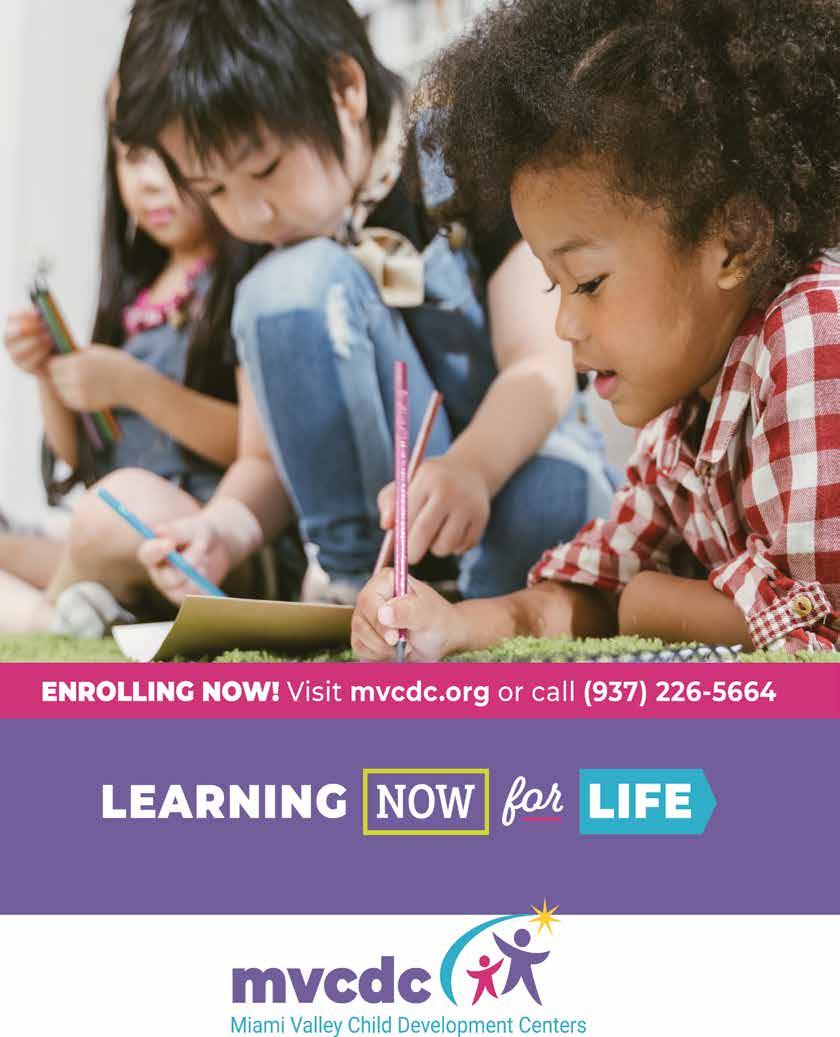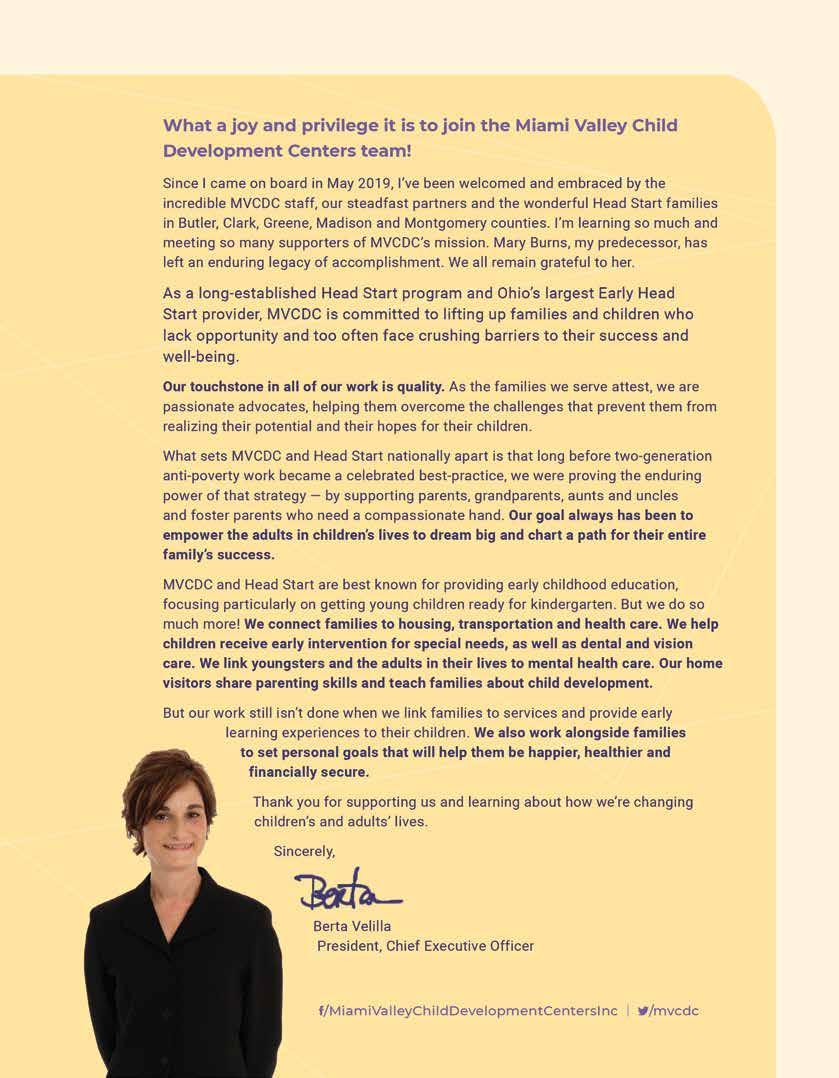
8 minute read
Let's Go to a Museum
Let’s Go to a Museum These fun, educational and family-friendly museums are worth the drive.
You don’t have to look very hard to find some amazing museums in Dayton. From Boonshoft Museum of Discovery to Carillon Historical Park, this city boasts a plethora of museums right here in our own back yard. But if you and your family are in the mood for a little road trip, here are our suggestions for museums that are worth a little extra wear and tear on the family vehicle.
There are many reasons why people flock from around the globe to visit this, the world’s largest children’s museum, but here’s a big one: It’s truly amazing. The Children’s Museum of Indianapolis is five floors of educational fun for all ages, and there is even more reason to visit with the addition of Riley Children’s Health Sports Legends Experience, which opens for the season in mid-March. This 7.5-acre outdoor health and fitness area encourages movement with interactive exhibits that let visitors try out a variety of sports, including tennis, football, basketball, golf and more.
3000 N. Meridian Street, Indianapolis childrensmuseum.org
COSI Columbus, Ohio
Touch dinosaur fossils, test flying objects, bike on a unicycle above the crowd, dance on musical stairs: COSI (Center of Science and Industry) takes learning about STEM subjects to a whole other level. This world-class museum is fun for all ages, and caregivers will appreciate the beverage bar on the first floor, where you can grab a custom-made latte to fuel you for the day ahead (or a glass of wine to toast your visit… we won’t judge!).
333 W. Broad Street, Columbus, Ohio cosi.org
Kentucky Science Center Louisville, Kentucky
Is it a children’s museum or is it a science center? We say it’s both! There are so many things to experience at Kentucky Science Center, the largest hands-on science center in the state. Design a roller coaster, build a magnetic tile structure, play with wind tunnels and much more. When you’ve explored all three floors of interactive exhibits, kick back and relax in Kentucky’s only four-story, 3D digital theater that is located in the museum, where you can watch everything from documentary films to Hollywood hits.
727 W. Main Street, Louisville kysciencecenter.org
This national award-winning interactive children’s museum provides fun, hands-on learning activities that encourage creativity. The museum staff invites kids to role play, conduct experiments and get physical on the hopscotch courts in the outdoor play garden. Currently, the museum offers an exhibit on Argentina (through November), a construction zone, Star-Spangled Banner with replica oval office, bubble room and more. And there is a cool coloring area where kids can color 2D cars, planes and houses, then scan their creations and watch as they become 3D and virtually move around the walls with all the other kids’ creations.
516 S. Kirkwood Road, St. Louis magichouse.org
Science Central Fort Wayne, Indiana
When there’s an indoor tunnel slide in the museum that will whisk you from one f loor to the next, you know you’re in for a good time. But Science Central is not just fun and games — although there are plenty of both. This museum is northeast Indiana’s only science center, and it’s where you can learn about physical, natural and applied sciences in the best way: with hands-on displays. If you have kiddos ages 7 and younger, head to the third f loor, where you’ll find an area just for them, with water tables and a mini climber.
1950 N. Clinton Street, Fort Wayne sciencecentral.org
Bradford Ohio Railroad Museum Bradford, Ohio
Train lovers of all ages and history buffs: This is the museum for you. The Bradford Ohio Railroad Museum celebrates the heritage and impact that the railroad had upon the Midwest, as well as the people who worked within the railroad industry. On display are photos, memorabilia and interactive exhibits, as well as children’s play area featuring play exhibits that little hands can touch, a Thomas the Train set and much more.
200 N. Miami Ave., Bradford, Ohio bradfrodmuseum.org

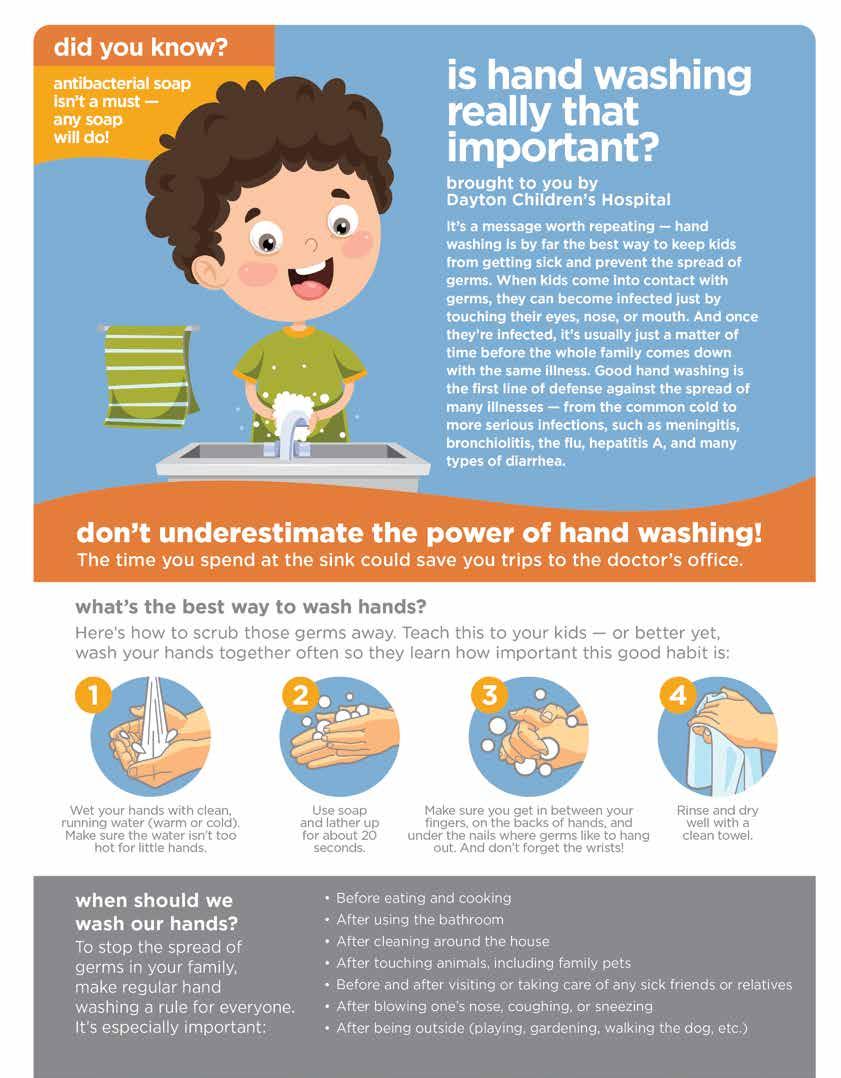
LET THEM
WORDS BY RACHAEL DUPREE PLAY Why play is so important in preschool.
As your child emerges from toddlerhood and gets ready for preschool, you’re likely to have all the feels. Sadness over your baby growing up. Pride in your intelligent little human. Anxiety over getting their education started out on the right foot.
This last one is the clincher. Although pre-K enrollment isn’t mandatory for Ohio children, research shows it improves school readiness, and the state is backing it up with funding to improve preschool access to 3- and 4-year-olds. As a result, the number and types of preschool programs available can be overwhelming: half-day, whole-day, full-week, partial-week, STEM curriculums, literacyfocused instruction. With all these things to think about, it may be easy to overlook one very important aspect of your child’s academic development that should be part of their preschool experience: play.

The Work of Children Believe or not, play is critical to a preschooler’s learning. As they say, “Play is the work of children,” and it’s true. Through play, children develop a number of critical skills that set them up for academic success in kindergarten and beyond, including:
· Creativity · Communication · Complex language abilities · Problem-solving and reasoning · Relationship-building · Spatial awareness · Impulse control · Increased attention
Yes, your child can really get all of that from playing with blocks and performing puppet shows.

“Research shows us that humans learn best when able to take an active role in their learning, have direct and hands-on experience with the materials, when it is meaningful to the learner and when it is offered in a social context,” says Kristi Kirinch, an educator in Dayton. “This sounds like play!”

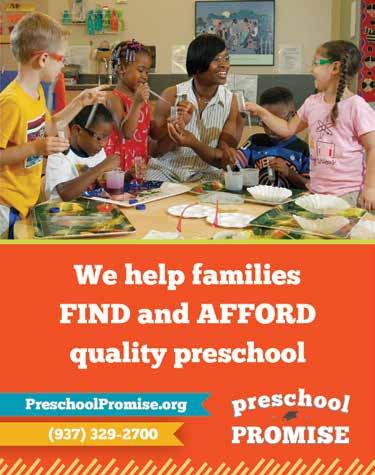
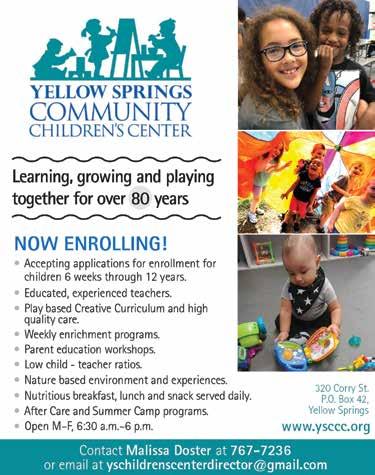
While, according to Kirinch, play means children are free to engage with and manipulate their environment, it can take a couple different forms in the classroom: child-selected play (aka free play) — think your child playing house or making mud pies — or adult-directed play, as in this example from Kirinch:
“If I am wanting children to learn about different types of apples, or perhaps to practice their comparison skills with these apples, I simply would not provide them with a worksheet with pictures of apples. I would provide them with the apples to taste, smell, explore, touch.”
Maybe they play a game where they count the apples, or cut them in half for making apple stamps — anything that follows the interests of the child and builds on their natural curiosities.
Decisions, Decisions So back to making that difficult choice: Where to send your child to preschool?
As with all decisions, it’s important to figure out what you want out of the preschool experience. Every child has unique needs, and it may benefit you to list out some qualities you expect out of a program before you begin your search. If an emphasis on play is important to you — and if you believe the research, it should — be ready to ask questions of the various preschool programs you visit: What is the curriculum? A school that focuses heavily on academics and worksheets may not be the best environment for a child to engage in play.
What is the program’s philosophy on play? Do they consider play to be essential to learning in the early years? Is at least a third of the day (hopefully more) devoted to play?

What is the daily routine like? Ask to observe a classroom, recommends Kirinch. Are children engaged in various learning activities? Is a variety of materials available to children? Are different areas of the room set up for play? If a large part of the day is devoted to group activities, this could indicate a lack of play time.
Do the teachers articulate a difference between child-led and directed play? Observe if the teachers are engaged and asking open-ended questions of children during play — this can be helpful in developing critical thinking, Kirinch
—MR. ROGERS
says. However, be skeptical of those that are too hands-off or overly involved in directing play.
Homework Time Regardless of where you send your child to preschool, your home is one of the richest learning (and play!) environments for your child, so don’t let the fun stop when the school bell rings. Allow time on evenings and weekends to play as a family. First things first: Turn devices off. When your kids aren’t caught up in the drama of a television show or a video game, their imaginations have room to soar. Play doesn’t have to be overly complicated. There’s no need to “entertain” your kids, and you can include fun in some of the normal parts of your routine.
“Take walks, and play ‘I spy’ games while on those walks,” Kirinch says. “While at the grocery store, have your child help you select the needed items.”
Sing songs together. Cook together. Above all, enjoy being a family together. Before you know it, they will be off in the real world, and you’ll miss this cherished time.

